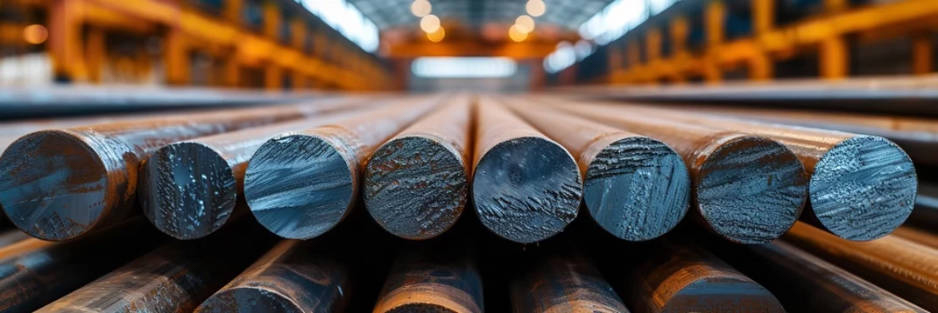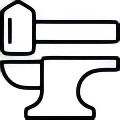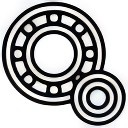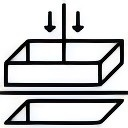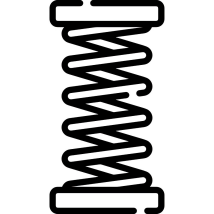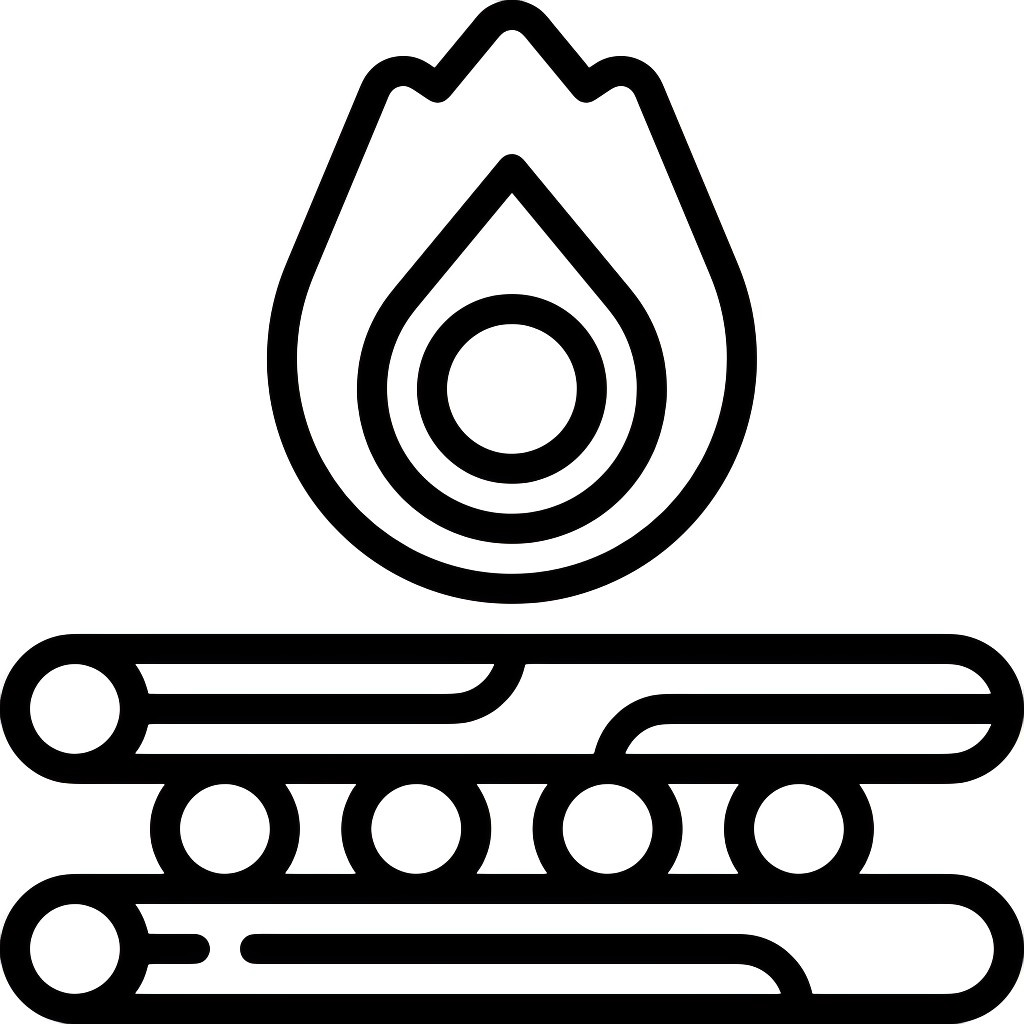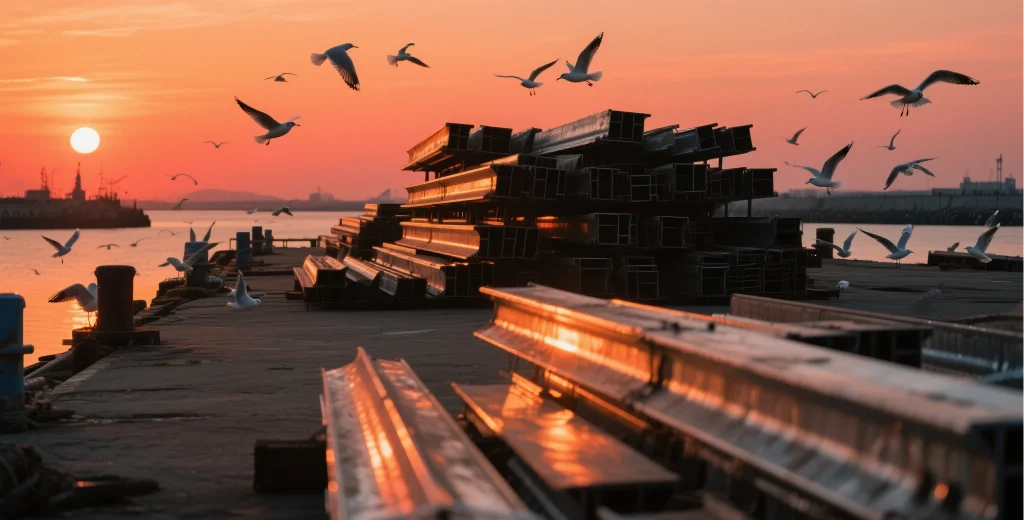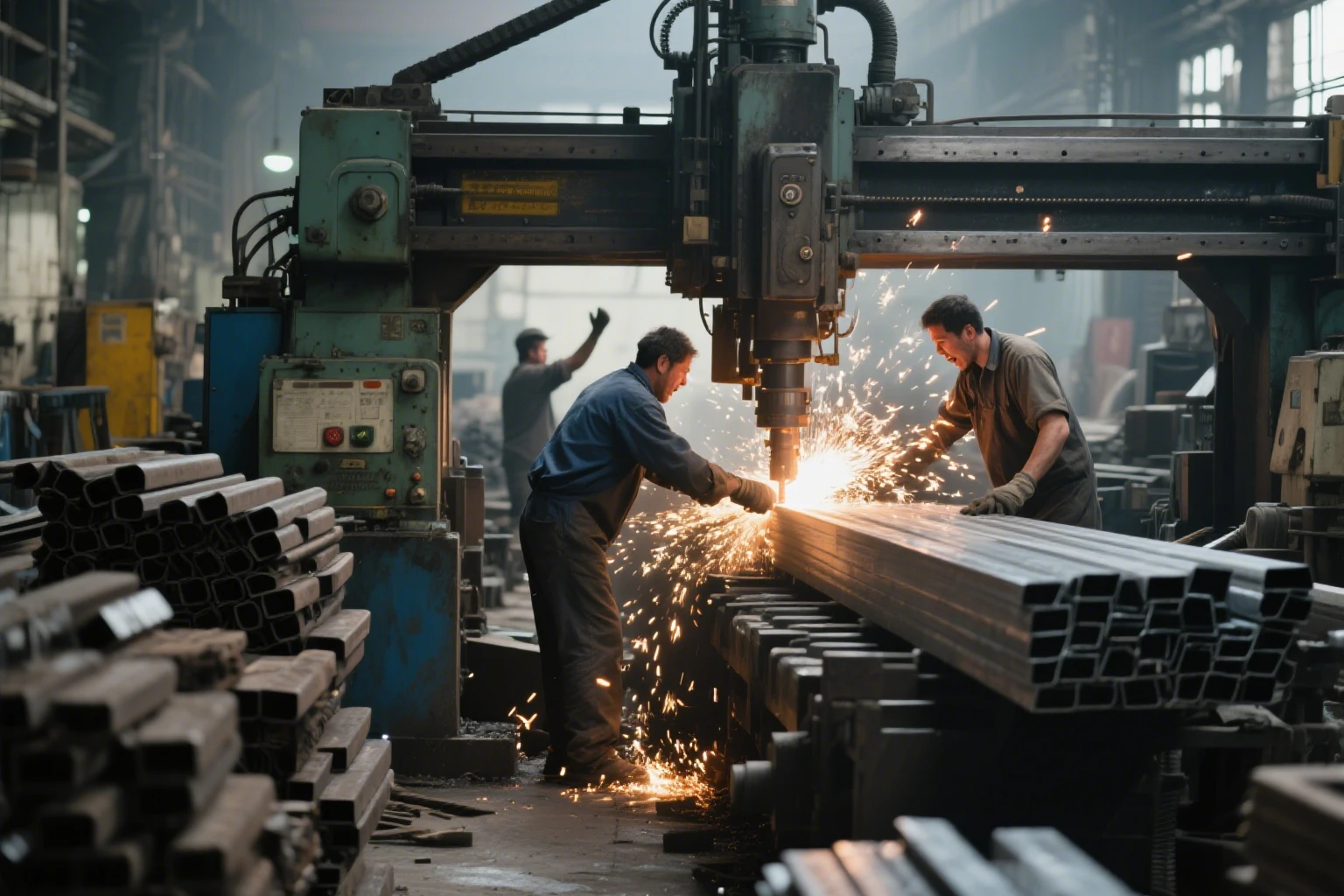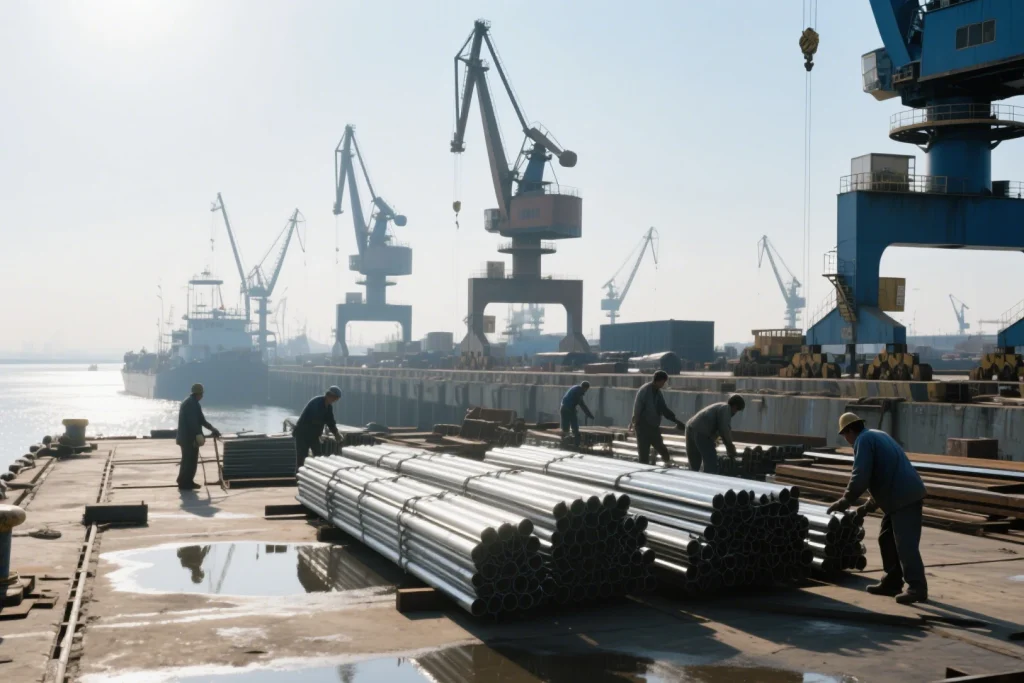
What Makes AR500 Steel So Tough Thanks to Carbon and Manganese?
How Carbon Pumps Up Hardness and Strength
AR500 steel derives its exceptional hardness from a high carbon content-typically around 0.30%. This significantly increases its Brinell Hardness Number (BHN), often reaching 480–550 HB, enabling it to withstand extreme wear and impact in demanding applications such as mining buckets and crusher liners. Abrasion-resistant steel, also known as wear-resistant steel, is a high-strength material designed to endure heavy surface wear in harsh environments. Plus, carbon helps create tough carbides when the steel’s heated up. Those make AR500 even harder.
Why Manganese Makes It Tougher and Wear-Proof
Manganese is like a secret weapon for AR500’s durability and wear resistance. It cleans up oxygen during production and tidies up the steel’s grain structure. This makes it super resilient to sudden impacts. So, AR500 can take hard knocks without cracking. Manganese also helps the steel toughen up when it’s under stress. That means it fights off scratches and damage from rocks or rough conditions. High-manganese steels, like Mn13, are crazy tough and get harder on the surface under pressure. When slammed or squeezed, those manganese-packed surfaces level up. Their hardness shoots from HB200 to over HB750, but the core stays bendy. With Manganese, abrasion resistant steel can have many benefits and applications for its toughness and wear-proof property.
Why’s Heat Treatment a Big Deal for AR500 Steel?
What’s the Deal with Quenching and Tempering?
Heat treatment is what gives AR500 its killer qualities. Quenching is when you cool red-hot steel super fast in water or oil. It locks in a rock-hard martensitic structure. Then, tempering comes in at just the right heat. It dials down the brittleness while keeping things tough. These tricks make AR500’s tensile strength pop. They ensure it can handle serious stress without snapping. High-quality quenched and tempered abrasion-resistant steel lasts 3.5 times longer than old-school materials.
How Heat Treatment Tweaks the Inner Structure
Heat treatment totally reshapes what’s going on inside AR500 steel by messing with its crystal setup. Quenching flips austenite into martensite—a tough but brittle form. Then tempering smooths things out. It mixes strength with just enough give. This fine-tuning is why AR500 rocks its key traits: mega hardness, awesome abrasion resistance, and solid toughness.
Why’s Alloy Design Such a Big Part of AR500 Steel?
The Cool Elements in AR500’s Mix
AR500 steel’s alloy blend is put together like a perfect recipe, with stuff like chromium, nickel, molybdenum, and boron. Chromium wards off rust and bumps up hardness with carbides. Nickel keeps things tough in icy conditions, so AR500’s great for extreme spots. Molybdenum makes the steel stronger by tightening its grain structure. It also stops brittleness during heating. Boron helps the steel harden evenly, even in thick chunks.
These ingredients work together to make AR500 super resistant to wear. They keep it reliable for heavy-duty jobs, like mining rigs or construction gear.
Juggling Strength, Hardness, and Bendiness
Getting strength, hardness, and flexibility to play nice is no easy feat. It takes super-precise alloy design, or what folks call alloy precision technology, plus careful crafting. High hardness is great for shrugging off wear, like you see with AR400 steel. But too much brittleness can mess things up under impact. By tweaking the alloy mix and using heat treatments like quenching and tempering, makers keep AR500 tough but versatile.
Even with all that hardness, abrasion-resistant steel can be cut or welded with no fuss. You can shape it with metal-melting tools too. This flexibility shows how smart alloy blends make it both high-performing and easy to use across tons of industries.
For things like excavator buckets or crusher blades, AR500 deals with brutal wear from rocks or ore. Its staying power comes from some clever material science magic.
How Does Fine-Tuning the Microstructure Make AR500 Even Better?
Why Smaller Grains Mean Better Wear Resistance
Shrinking the steel’s grain structure is a big win for making AR500 tougher. Tiny grains make everything tighter and more even. That seriously boosts hardness and wear resistance. Abrasion-resistant steel, also known as wear-resistant steel, is a high-strength material designed to endure heavy surface wear in harsh environments. Smaller grains create more boundaries, which stop cracks or damage when the steel’s under pressure. This trick ramps up AR500’s hardness and helps it fend off wear from rocks or nasty conditions.
Smaller grains also make AR500 more resilient. They spread stress evenly, which is key for heavy-hitting jobs like mining tools or big machine parts. This dialed-in structure keeps AR500 rock-solid even in the toughest spots.
How Crystal Changes Make It Stronger
Crystal changes are a huge part of beefing up AR500 during heat treatment. Quenching turns austenite into martensite—a hard but brittle form. That’s crucial for getting sky-high strength and hardness. Heat treatment significantly alters AR500 steel’s microstructure by transforming its crystalline phases. Tempering comes in to polish that martensitic structure, cutting brittleness while keeping the hardness.
These tweaks are super controlled with alloy precision technology. It makes sure AR500 nails the balance between strength and flexibility. The final setup fights off wear and impact like a champ, perfect for things like conveyor belts or crusher liners.
How Does Custom Design Make AR500 Shine in Different Jobs?
Tweaking AR500 for All Kinds of Work
Custom design lets makers shape AR500 steel to fit whatever a job needs. Take mining—it demands materials that can handle gritty rocks and ores. Abrasion-resistant steel can make products last two to three times longer, sometimes even five times, depending on the gig. By playing with alloys and heat treatments, makers can dial up stuff like wear resistance, toughness, or rust-proofing.
In construction gear, keeping things light but strong is a must. Thinner AR500 plates do the trick. These slim but sturdy plates let you carry more while still fighting off wear. For shaping, AR500 can be welded easily or machined with metal-melting tools. That makes it handy for all sorts of industries.
Holding Up in Crazy Conditions
AR500 steel thrives in brutal environments. Its toughness comes from a smart alloy mix and heat treatment. High-quality quenched and tempered abrasion-resistant steel offers 3.5 times better wear resistance than traditional materials. Whether it’s grinding abrasion in mining or heavy loads in machinery, AR500 doesn’t quit.
Chromium helps it shrug off rust, great for wet or chemical-heavy spots. Nickel keeps it tough in freezing temps, so it works like a charm even in icy conditions.
Why’s Promispecial®’s AR500 the Best for Hardness and Performance?
Promispecial®’s AR500 steel is in a league of its own, thanks to next-level production and awesome qualities. With slick tricks like alloy precision technology, we nail unbeatable hardness and strength. Our NM450Tuf product can take impacts over 100J at -20°C. That’s miles ahead of what most abrasion-resistant steels can do.
One cool thing is our knack for making lightweight, tough solutions for specific jobs. Our ultra-thin plates save weight but don’t skimp on strength. That’s a big deal for building transportation gear.
Promispecial® also gets props for going green. Our products last longer, cutting down on repairs. Thinner plates mean more load capacity for transport gear and fewer CO2 emissions. These smart moves save money and help the planet.
Promispecial® is a global supplier of high-quality wear-resistant steel, offering a wide portfolio of products including AR500, NM400Tuf, and NM450HiTemp. Our expertise lies in producing quench-and-tempered steel plates with tight flatness tolerance and consistent hardness, meeting the needs of heavy-duty industries like mining, construction, and material handling.
Looking for a reliable AR500 steel supplier for mining or construction? Contact Promispecial® today to get expert support and premium-grade steel solutions tailored to your industry needs.
FAQ
Q: What’s the big deal with carbon in AR500 steel?
A: Carbon is like the backbone of AR500’s toughness! It’s packed in at high levels, making the steel super dense and hard. Those carbon atoms squeeze into the iron’s structure, creating a rock-solid framework that boosts the steel’s strength. Plus, when heated, carbon forms carbides—tiny, tough compounds that make AR500 even harder. This is why it’s a champ at handling heavy wear in stuff like mining gear or construction tools. That’s the first material science secret: carbon’s power to crank up hardness and strength.
Q: How does manganese help AR500 steel stay durable?
A: Manganese is AR500’s secret weapon for staying tough and wear-proof. It cleans up the steel during production and tightens its grain structure, so it can take hard hits without cracking. Even cooler, manganese makes the steel harden up when it’s stressed—like when it’s scraped by rocks. Surfaces can jump from a hardness of HB200 to over HB750, while the core stays flexible. That’s secret number two: manganese’s knack for boosting toughness and abrasion resistance.

